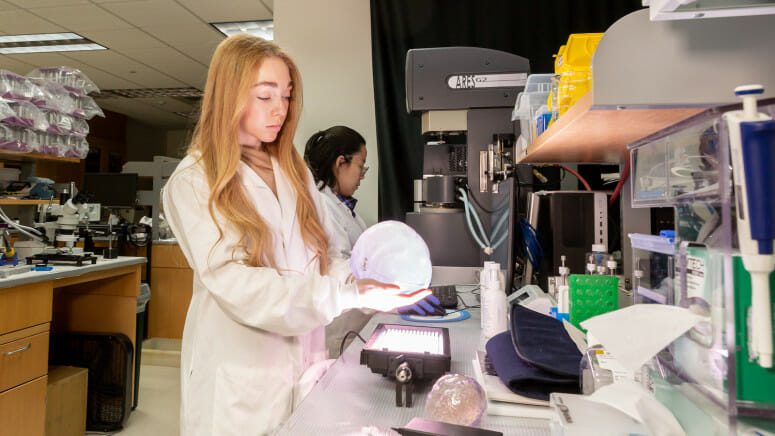07 Mar From concussions to PFAS: five ways UW research is tackling real-world problems

Undergraduate researcher Grace Kreissler holds a clear 3D-printed skull that the researchers created to aid in their investigation of traumatic brain injuries. PHOTO BY JOEL HALLBERG
Scientific research can feel distant from our everyday lives, and indeed it often requires years — or decades — of intense study to bring a life-saving medical treatment or useful new technology to fruition. Even in the face of daunting challenges and long timelines, researchers at the University of Wisconsin–Madison bring their love for learning and passion for problem solving to the task of improving lives.
From advanced materials aimed at making athletes safer to medical discoveries that could one day help treat ailments like blindness, here are just a few examples of UW–Madison research that tackles real-world problems with innovative scientific approaches.
Making headway on detecting and preventing brain injuries
Based in the Department of Mechanical Engineering, a collaborative initiative spanning academia, industry and federal agencies is pursuing new strategies for preventing and better detecting concussions and other traumatic brain injuries. Formed in 2017, the PANTHER research initiative has already made progress in identifying new ways to diagnose brain injuries without obvious symptoms. The initiative has also produced a lightweight, ultra-shock-absorbing foam made from carbon nanotubes that could be used in helmets to better protect athletes from strong blows.



